Great for variety of projects
These are great for lots of projects. They're really sensitive and work well with Arduino. I haven't had any problems with them.
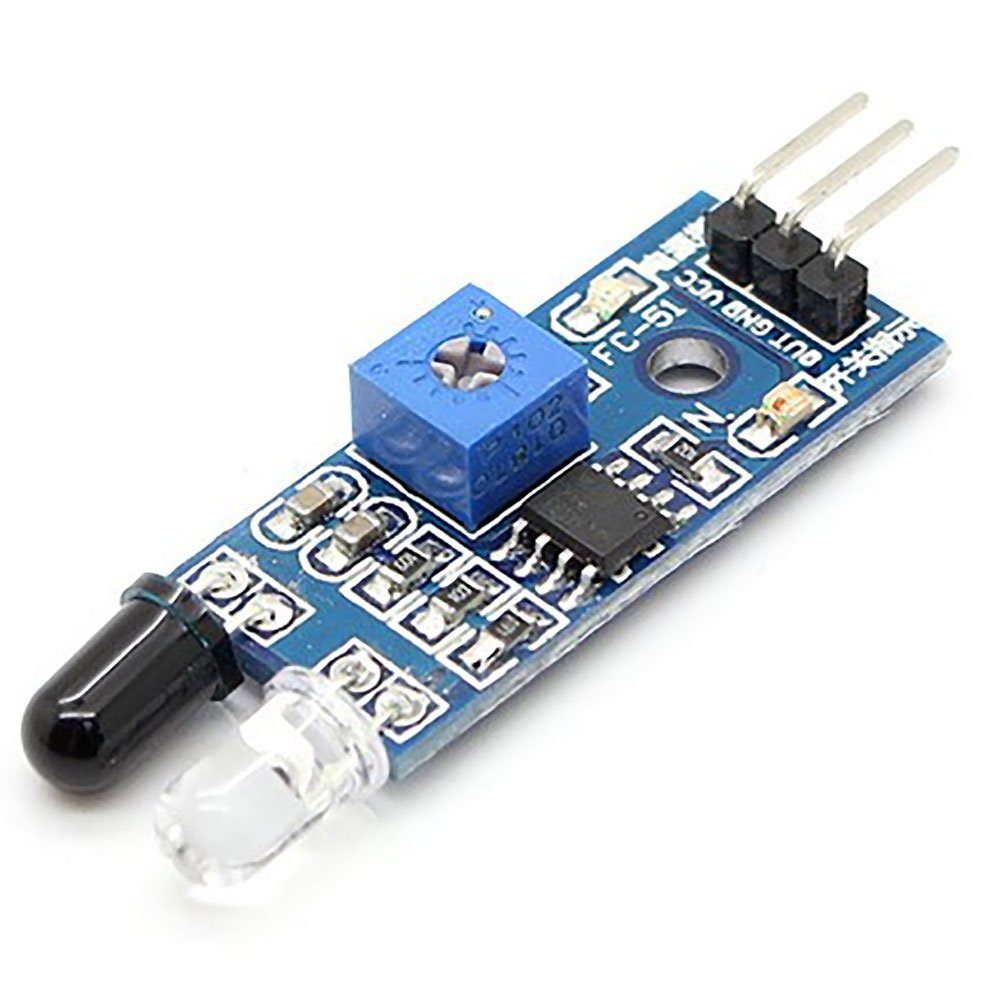
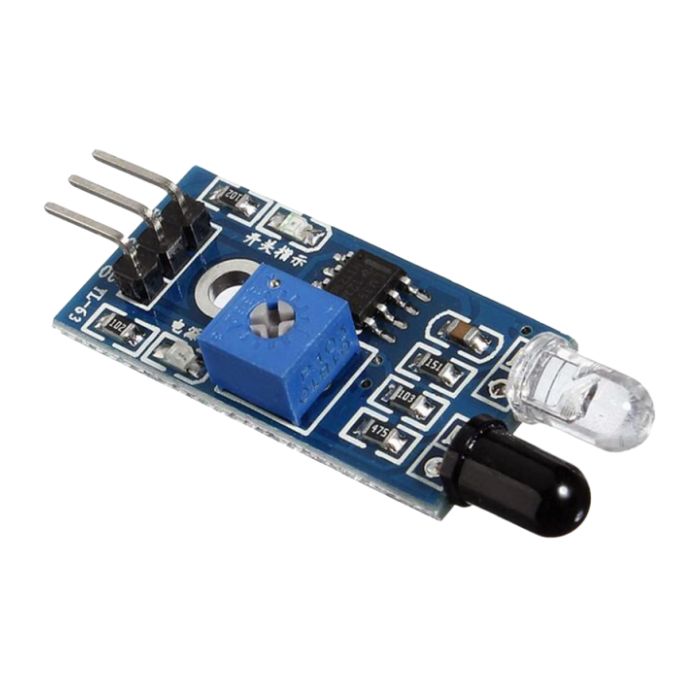
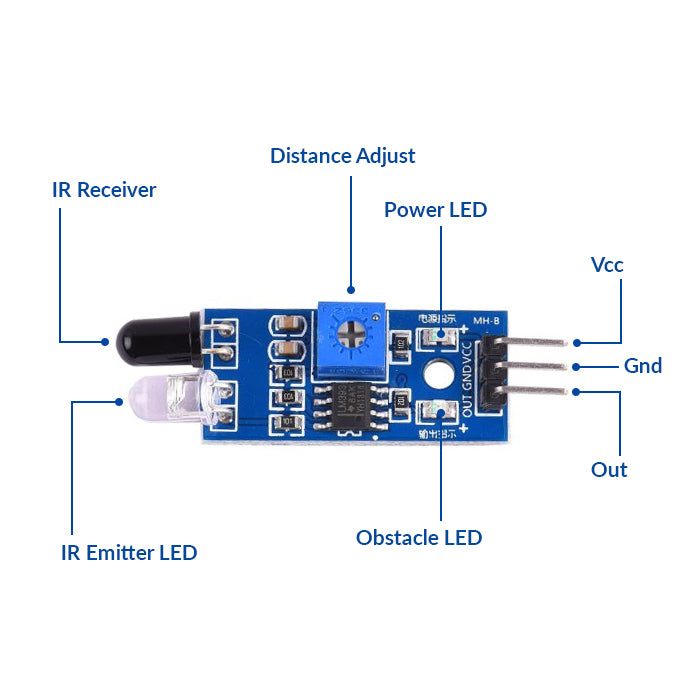
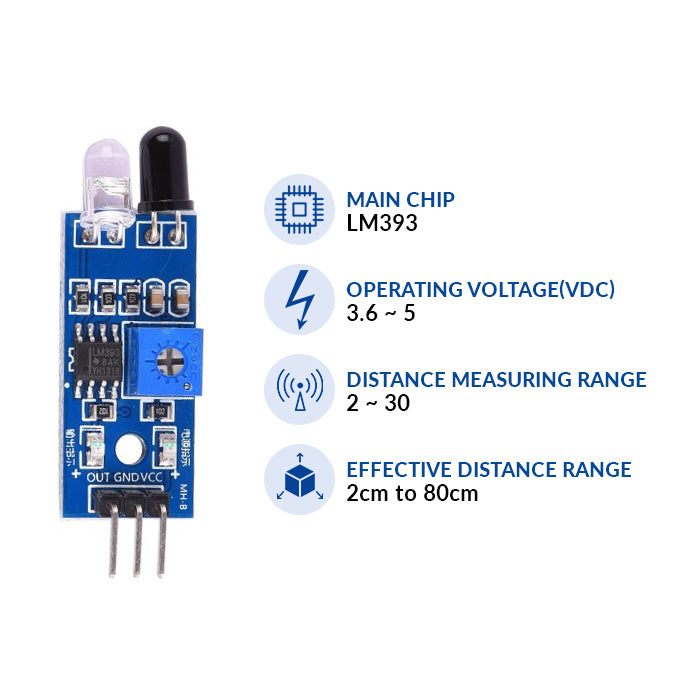
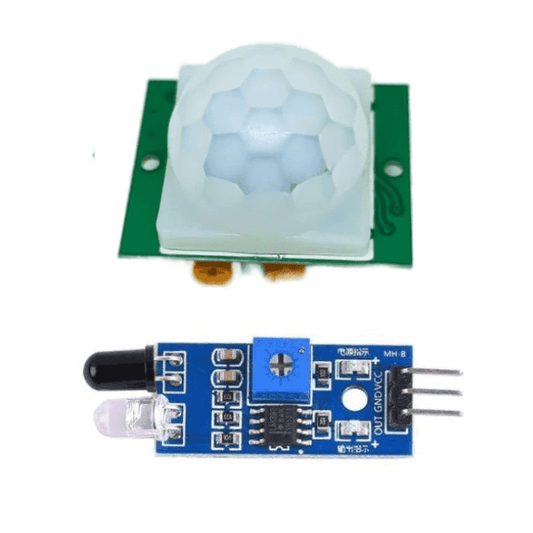
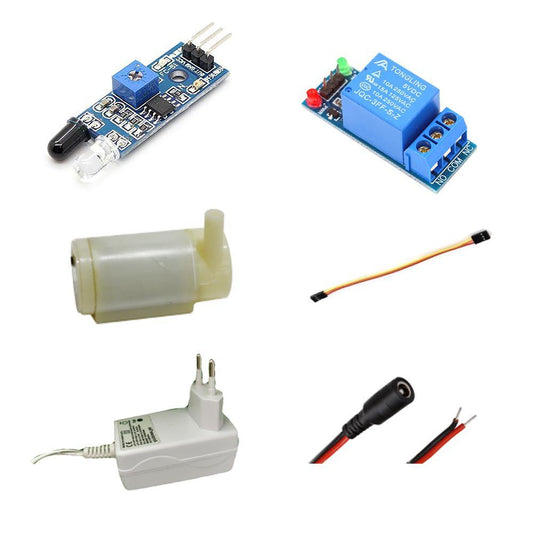
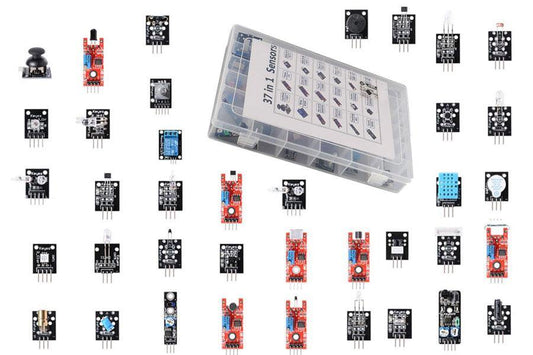
An infrared (IR) sensor is an electronic device that measures and detects infrared radiation in its surrounding environment. Infrared radiation was accidentally discovered by an astronomer named William Herchel in 1800. While measuring the temperature of each color of the light (separated by a prism), he noticed that the temperature just beyond the red light was the highest. IR is invisible to the human eye, as its wavelength is longer than that of visible light. Anything that emits heat gives off infrared radiation
There are two types of infrared sensors: active and passive.
The IR sensor is a sophisticated device designed to detect electromagnetic radiation in the infrared range. It can identify and measure temperature changes caused by emitted or reflected energy from objects within its field of view. This makes it ideal for many industries that require precise monitoring, like HVAC systems, medical instruments, robotics, surveillance cameras and more. Many different types are available depending on what your requirements are: Passive Infrared (PIR) and active Infrared (AIR) detectors come with various features such as adjustable sensitivity levels; thermopile sensors respond to heat instead of light spectrums – making them perfect for fire alarms; bolometers track subtle differences between temperatures which makes them suitable for air-conditioning measurement; while pyrometers offer high accuracy readings over long distances when used outdoors in solar tracking applications. With an array of features to choose from – the possibilities remain limitless!
IR (infrared) sensors offer a wide range of advantages for use in different applications. They are capable of detecting motion, temperature differences and changes in ambient light levels with great accuracy. Furthermore, IR sensors can be set up from practically any distance and have the capability to detect even extremely small changes at long distances. Moreover, their non-contact operation eliminates wear that is usually associated with mechanical sensing systems making them an ideal solution for repeatedly or continuously operating environments such as automation control or security surveillance scenarios. On top of this they typically require very low power consumption while providing reliable readings regardless if environmental conditions change rapidly over time; thus allowing these types of devices to be used virtually anywhere without requiring regular maintenance or repair services - leading to significant cost savings in both installation and operational costs!
An IR sensor, also known as an infrared sensor, uses a special type of light called infrared to measure distance. This technology works by emitting pulses of invisible light and then measuring the time it takes for these pulses to bounce back from objects in its range. The longer the pulse takes to return, the farther away the object is located from the sensor. Advanced algorithms are used to accurately calculate this distance based on precise measurements and help eliminate any interference or false readings caused by external factors such as temperature changes or ambient lighting conditions.
Infrared (IR) sensors are essential components in modern technology, allowing for the detection of heat and motion that is otherwise invisible to the human eye. These sensors work by emitting an infrared light beam from a source and then measuring its reflection off nearby objects. When an object enters the sensor's field of view, it absorbs some of this emitted infrared radiation, causing a change in temperature on its surface which alters the amount reflected back to the sensor. This variation triggers electrical signals within the sensor, indicating movement or presence. IR sensors have versatile applications such as security systems, automatic doors, and even remote controls making them indispensable tools in our daily lives.
The infrared sensor, consisting of three primary pins – VCC, GND and OUT - enables the detection of infrared radiation through digital signal output. While the VCC pin supplies power to the sensor, the GND pin is connected to ground for stability. The third pin-OUT plays a crucial role in sensing IR rays and creating corresponding electronic signals facilitating non-contact temperature measurement technology.
The sensitivity of an infrared (IR) sensor can be easily adjusted by utilizing the potentiometer. Simply turn the potentiometer in a clockwise direction to enhance sensor responsiveness, or turn it counterclockwise to decrease its sensitivity. This feature allows for customizable adjustments depending on your specific needs and environment. Whether you need high precision detection or more generalized sensing capabilities, our IR sensors provide flexibility with their adjustable settings. Fine-tuning the sensitivity is quick and simple, making these sensors ideal for various applications such as security systems, motion-activated lighting, and industrial automation processes.
To verify the functionality of an IR sensor, there are several steps that can be taken. First and foremost, it is important to check all connections between the sensor and other devices for secureness. Next, using a multimeter to measure voltage output from the sensor when exposed to various light sources within its range can provide valuable information. Lastly, conducting tests with known objects emitting IR radiation will allow observation of how accurately the sensor responds - these methods aid in determining whether maintenance or replacement is necessary for your device.
In order to accurately assess the functionality of an IR sensor, there are two methods that can be utilized with a multimeter. Firstly, set the multimeter to measure DC voltage and connect it directly to the IR diode. Next, simply hold a remote control near the diode and press any button; if functioning properly, you will see a quick increase in voltage displayed on your meter. Another option is testing with an IR sensor module by supplying 5V power through Vcc pin and grounding through Gnd pin while bringing your hand close to its sensors. A functional system should result in illumination from the signal LED.
Coding an IR sensor with Arduino can be a valuable skill for any professional in the field of technology. The process involves using the Arduino IDE to create and upload code that will allow your device to receive, read, and interpret data from infrared signals. First, ensure you have all necessary components - including the IR sensor module and appropriate hookup wires - before starting your project. Then, carefully follow wiring instructions specific to your particular model of IR sensor. Next comes writing code which includes importing libraries and defining variables related to input/output pins on both the sensor and connected board or shield. Finally, test your circuit through serial communication between devices until desired results are achieved.
To connect a 3 pin IR sensor, you will need basic electronics knowledge and the right tools. First, gather your materials: soldering iron, wires, breadboard or PCB board and of course the sensor itself. Start by identifying which pins on the sensor correspond to ground (GND), power supply (VCC) and signal output (OUT). Once identified, using a multimeter check for any short circuits or faulty connections in your setup before connecting anything together. Next step is to carefully solder each wire onto their respective pins ensuring proper contact with no loose ends. Finally insert it into either your Arduino’s GPIO header slots if using an Arduino-based project; otherwise into its own dedicated port.
To connect an IR sensor to Arduino, follow these simple steps for a seamless integration. Firstly, gather all the necessary components including the IR sensor module and Arduino board with its corresponding cables. Next, identify the input/output pins on both devices and ensure that they are compatible. Then, using male-to-female jumper wires, connect one end to the output pin of your IR sensor and insert it into any digital or analog pin on your Arduino board based on your project's requirements. Finally, power up both devices by connecting them to a reliable power source such as a USB cable from your computer or external battery pack. With this straightforward process in mind coupled with proper coding techniques, the potential applications for incorporating infrared technology into projects is limitless.
Connecting an IR sensor to a Raspberry Pi is a simple and straightforward process that can enhance the capabilities of your device. First, you will need to gather all necessary materials such as the IR sensor itself, jumper wires, and a breadboard. Next, carefully connect the VCC pin on the sensor to any 5V GPIO pin on your Raspberry Pi board using a jumper wire. Then connect GND from the sensor to one of its adjacent ground pins on the board. Finally, use another jumper wire to link OUT from the IR sensor directly with GPIO Pin 18 for receiving input signals in Python code or direct binary reading through sysfs interface files.
Maximizing the range of an infrared (IR) sensor is crucial for many applications. As a marketing expert, I have found that there are several ways to achieve this effectively. Firstly, adding more transmitters can significantly increase the range as it emits more light and enhances reflection from the object being detected. Additionally, incorporating four or five diodes in parallel amplifies output power and expands distance detection capabilities. Another effective solution is using a higher power emitter or modulating multiple emitters simultaneously to extend coverage area further. Moreover, optically collimating the IR beam at both transmitter and receiver ends fine-tunes focus accuracy resulting in better performance. In situations where long-range indoor use or sunlight interference occurs, utilizing filters greatly improves signal strength for accurate measurements. Lastly, replacing an IR phototransistor with an advanced IR receiver may enhance sensitivity levels especially when detecting low-intensity signals.
To make an IR sensor, you will need to gather the necessary components and follow a few simple steps. First, start by obtaining a photodiode or phototransistor which will be used as the main sensing element. Next, assemble this with resistors and capacitors on a PCB board according to your desired circuit design. Ensure that all connections are secure before proceeding. Once assembled, test the functionality of your IR sensor with various infrared light sources such as remote controls or heat lamps. Make any necessary adjustments to improve sensitivity or range. Lastly, enclose the sensor in a protective casing for durability and reliability when being implemented into real-life applications. With these steps followed accurately and diligently using quality components, you can create an efficient IR sensor capable of detecting infrared radiation in its given environment.
Creating an efficient and reliable IR sensor for a line follower is crucial in ensuring smooth navigation and accurate tracking. As a seasoned marketing expert with years of experience, I have found that the key to making an effective IR sensor lies in understanding its components and their functions. Firstly, it is essential to choose high-quality infrared emitting diodes (IR LEDs) as they emit light at specific wavelengths required for detection. Next, selecting appropriate photodiodes capable of converting incoming light into electrical signals plays a vital role. Optimizing the circuit design by incorporating necessary resistors and capacitors further enhances the sensitivity of the sensor. Additionally, calibrating the distance between emitter-receiver pairs based on surface reflectance helps eliminate false readings caused by ambient light or shiny surfaces. Regular maintenance such as cleaning lenses and checking connections ensures consistent performance.
Creating an obstacle avoiding robot using IR sensors requires a thorough understanding of the technology and careful execution. To begin, gather all necessary components such as Arduino board, motor driver module, servo motors and an IR sensor kit. Assemble the hardware according to provided instructions or seek professional assistance for optimal results. Next step involves programming the Arduino board with appropriate codes that will control the movements of your robot based on inputs received from infrared sensors. It is essential to test each component individually before final assembly to ensure proper functionality. With precise calibration and testing techniques coupled with advanced coding skills, you can create a robust and efficient obstacle avoiding robot that serves its purpose seamlessly. Remember to always prioritize safety while working on any DIY projects involving electronic devices.
Active IR sensors are devices that emit infrared radiation and then detect the reflected signal to determine the presence or absence of an object. These advanced sensors use active transmitters, such as LEDs or lasers, to send out short pulses of light at a specific frequency range. When an object enters this area, it reflects back some of the emitted energy towards the sensor which is then received and analyzed by a receiver circuit. The main advantage of active IR sensors is their ability to work in any lighting conditions since they do not rely on ambient light like passive IR sensors do. This makes them highly reliable for various applications including security systems, automation processes, and proximity detection.
An IR sensor is a vital component of modern smartphones that enhances the user experience through advanced technology. It stands for Infrared Sensor, and it allows phones to detect infrared radiation emitted by objects in their proximity. This feature enables our devices to sense movement, gestures, or even body heat without any physical contact. With this cutting-edge technology integrated into our phones, users can enjoy features like face unlock and air gesture control effortlessly. Moreover, the energy-efficient nature of IR sensors helps in extending battery life while providing accurate results consistently.
In the field of automation, two commonly used sensors are IR (infrared) and ultrasonic sensors. Despite their shared ability to detect objects without physical contact, they possess significant differences that make each uniquely suitable for various applications. The compact and precise IR sensor emits infrared light and measures its reflection off an object to determine distance or presence. It is easily integrated into devices such as smartphones or home appliances due to its size and accuracy. Contrastingly, the ultrasonic sensor utilizes ultrasound waves that bounce back from surfaces with high precision in measuring distances. This feature makes it well-suited for industrial environments where external factors like dust or smoke can affect accurate detection results.
IR sensor stands for Infrared Sensor. It is a type of electronic device that detects and measures infrared radiation in its surroundings. This sensitive technology has been integrated into various devices, including security systems, motion detectors, temperature sensors, and even remote controls. The full form clearly highlights the core function of this advanced sensor - to detect invisible rays emitted by objects with heat energy.
IR sensors are versatile tools that detect infrared light emitted by objects in their surroundings. Their range can vary greatly depending on design and type, typically spanning from a few centimeters to several meters. Nevertheless, external variables like temperature or atmosphere must be taken into account when analyzing an IR sensor’s readings for optimal precision.
However, factors such as ambient temperature and atmospheric conditions can affect the accuracy of the sensor's measurements.
The detection range of IR sensors depends on their technology and purpose. Some can pick up movement just a few inches away, while others can scan rooms or even identify objects at longer distances.
In today's technological landscape, the use of IR sensors has become increasingly prevalent in various industries. These sensors are important devices that can detect and measure infrared radiation emitted by objects in their vicinity. They play a key role in enhancing security systems, as they can sense movement or heat from human bodies when placed strategically around sensitive areas. Additionally, IR sensors are used to improve automation processes by detecting obstacles or changes in temperature within machinery and triggering appropriate actions accordingly. This makes them valuable tools for increasing efficiency and reducing operational costs for businesses across different sectors such as manufacturing, healthcare, transportation, and more.
The IR Proximity Sensor is a crucial component in the world of robotics and automation. It serves as an essential tool for detecting objects that are in close proximity to it, using infrared technology. The working principle behind this sensor is quite simple yet highly effective. Essentially, the sensor emits an infrared beam which travels outwards until it hits any obstacle or object nearby. This reflected beam then gets transmitted back to the receiver within the sensor, where its strength and intensity get measured accurately by sophisticated circuitry before translating into a digital signal output indicating detected presence or absence of objects in front of it with utmost precision.
The IR Proximity Sensor is an essential component in the world of robotics and automation. However, like any electronic device, there are instances where it may not function properly. There could be several reasons why your IR sensor is not working as expected. One possible reason could be a faulty or damaged wiring connection that can lead to inconsistent readings. Another factor could be improper placement of the sensor which affects its ability to detect objects accurately. Furthermore, low battery power or interference from other sources emitting infrared light can also impact its performance. To ensure that your IR proximity sensor works efficiently without any disruptions, it's crucial to follow proper installation procedures and troubleshoot any issues carefully with professional guidance if needed.
The LM358 is a popular choice in the world of infrared (IR) sensors, and for good reason. This versatile op-amp has proven to be highly effective in IR sensor applications due to its exceptional precision and low power consumption. Its dual operational amplifier design makes it ideal for amplifying small signals from IR receivers, while also providing high gain capability and signal processing capabilities. With its wide supply voltage range and robust performance even under extreme temperature conditions, the LM358 offers reliable functionality that meets the demanding requirements of modern-day IR sensing technology.